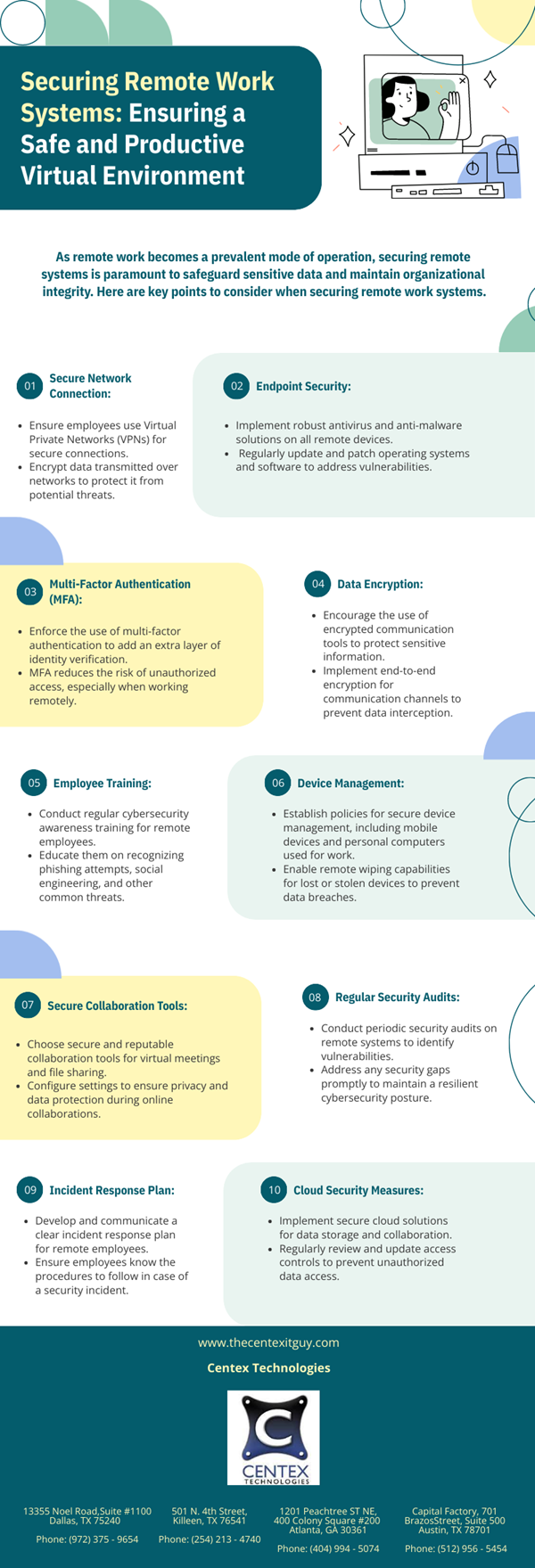The design and architecture of an IT network are critical components that directly impact the efficiency, performance, and security of an organization’s operations. Whether a business is setting up a new network or revamping an existing one, careful planning is essential to ensure that the network meets the evolving needs of the business.
Defining Requirements and Objectives
Before getting into the technical details of network design, it’s essential to define the organization’s requirements and objectives. Consider factors like the size and scale of the business, the number of users and devices, anticipated growth, and budget constraints. Identify specific business goals that the network should support, such as improving communication, enhancing collaboration, or increasing productivity. By clearly defining a business’s requirements and objectives upfront, the IT team can tailor network design to meet the organization’s unique needs.
Assessing Current Infrastructure
Analyze existing IT infrastructure to identify strengths, weaknesses, and areas for improvement. Evaluate the performance of network components, such as switches, routers, and access points, as well as the overall network topology. Identify any bottlenecks, latency issues, or security vulnerabilities that may exist in the current setup. Gaining insight into the existing infrastructure’s strengths and limitations aids in making informed network design decisions, enabling IT staff to address any deficiencies in the new design effectively.
Network Topology and Architecture
Choose an appropriate network topology and architecture that aligns with the organization’s requirements and objectives. Common network topologies include star, mesh, bus, and ring, each offering unique advantages and disadvantages in terms of scalability, fault tolerance, and performance. Determine whether a centralized or distributed architecture is better suited to the organization’s needs, taking into account factors such as data flow, traffic patterns, and geographical distribution of users and resources.
Scalability and Flexibility
Ensure that the network design prioritizes scalability and flexibility to seamlessly accommodate future growth and evolving technological advancements. Choose scalable network components and architectures that can easily expand to accommodate additional users, devices, and applications. Consider adopting virtualization and cloud technologies to increase flexibility and agility in provisioning and managing network resources. Build redundancy and failover mechanisms into the design to ensure high availability and resilience in the face of failures or disruptions.
Network Security
Security is a pivotal element in network design and warrants diligent attention. Employing robust security measures is imperative to shield the network against unauthorized access, data breaches, and cyber threats. This includes deploying firewalls, intrusion detection and prevention systems (IDPS), virtual private networks (VPNs), and access control mechanisms to control and monitor traffic flow. Encrypt sensitive data both in transit and at rest to prevent interception and unauthorized disclosure. Regularly update and patch network devices and software to address security vulnerabilities and ensure compliance with industry regulations.
Quality of Service (QoS)
Ensure optimal performance for critical services and applications by prioritizing network traffic and effectively allocating bandwidth resources. Implement Quality of Service (QoS) policies to prioritize real-time traffic, such as voice and video, while ensuring that non-essential traffic does not degrade network performance. Configure QoS parameters such as bandwidth allocation, traffic shaping, and packet prioritization to meet the requirements of different types of applications and users.
Network Management and Monitoring
Implement network monitoring tools and software to track performance metrics, monitor network traffic, and detect anomalies or security breaches. Use centralized management platforms to streamline configuration, monitoring, and troubleshooting tasks across the entire network. Periodically analyze network performance data and conduct audits to evaluate compliance with service level agreements (SLAs) and pinpoint areas for optimization.
Disaster Recovery and Business Continuity
Develop a disaster recovery and business continuity plan to ensure uninterrupted operation of critical systems and services in the event of a network outage or disaster. Implement backup and data replication strategies to protect against data loss and ensure rapid recovery in case of hardware failures, natural disasters, or cyber-attacks. Test the disaster recovery plan regularly to validate its effectiveness and identify any gaps or weaknesses that need to be addressed.
Designing an effective IT network requires careful consideration of various elements. With proper planning and implementation, an optimized IT network can serve as a foundation for digital transformation and enable organizations to achieve their strategic objectives. For more information on IT network planning and deployment, contact Centex Technologies at Killeen (254) 213 – 4740, Dallas (972) 375 – 9654, Atlanta (404) 994 – 5074, and Austin (512) 956 – 5454.


